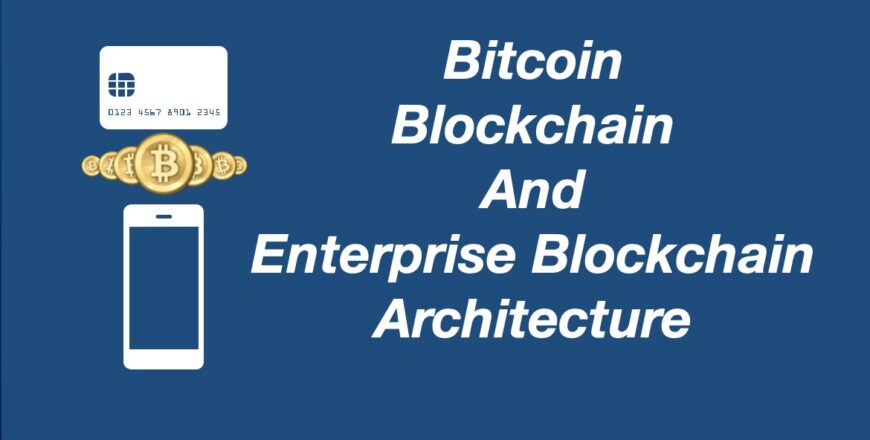Bitcoin, Blockchain and Enterprise Blockchain Architecture

Bitcoin-based blockchain is popularly termed blockchain 1.0. It is modeled around simple database concepts with data insertion (transaction recording) happening sequentially in the distributed ledger. There was no special logic involved. Then came the modern blockchain applications that introduced the concept of smart contracts. The smart contracts came under the blockchain 2.0 umbrella. The smart contract represents a software code that performs some logic, then just recording transactions. Blockchain platforms like IBM HyperLedger, Microsoft Bletchley, Ethereum, etc., are all part of the blockchain 2.0 world.
In this video, we will go over the evolution of Bitcoin, blockchain technology, and how blockchain technology can help realize various Enterprise use cases.
Prerequisite for the course
What is Bitcoin - What is Blockchain - Mining & Transactions in Bitcoin-Blockchain
In this video, Learn What is Bitcoin, Blockchain, Cryptocurrency, and Transactions in the Bitcoin-Blockchain network. Understand the difference between bitcoin and blockchain, the concept of miners, and how consensus is reached in a public bitcoin-blockchain network.
What is Blockchain Architecture and its components
Blockchain design of today has moved beyond cryptocurrency. It has evolved into a platform that supports industry-wide use cases suitable for public and enterprise needs. The reference architecture shown below will be a foundation for building or implementing blockchain applications for industry-wide use cases. It depicts a layered architecture that provides components and services necessary to implement blockchain applications for enterprise needs. It can be used to develop a blockchain of single or multiple networks (involving multiple business units or organizations) based on the business goals and objectives. One can follow the reference architecture to design both permissioned (private) as well as permissionless (public) blockchain applications.


